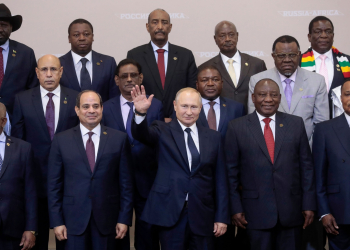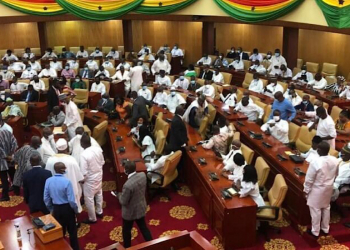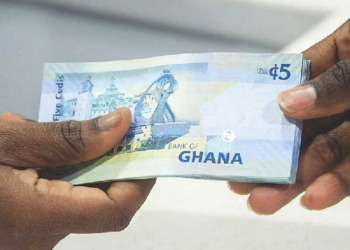They, like other religious groups or movements, are identified by what they wear, eat and drink and by how they act. Known for wearing dreadlocks and ardent believers in the use of things nature bestows on mankind, Rastafarians’ way of life is something to behold.
Meet them in town and their way of greeting is sublime as they lock fists. Curtesy history, Rastafarianism is said to have been established somewhere around the 1930s in Jamaica.
The movement traces its beliefs to specific interpretations in the Holy Bible. Comparable to other religious groupings, which have many sects within it, Rastafarianism is also noted for such. Among these sects in the movement include the Bobo Ashanti, Niyabinghi and the Twelve Tribes of Israel.
But do these few features really tell who a Rastaman is? Ras Collins is a staunch follower of the movement.
“It’s a happy levity, you know, it’s a happy lifestyle that I enjoin everyone to be part of it. It’s not about smoking weed. No, no, no! It’s about preserving what is left of Africa. And the only way we can do that is through Rastafari; no other way.”
Charmaine Clarke is a Rasta lady and a London based artiste manageress. She says to be called a Rasta means one has paid particular attention to what they eat among others.
“If you are not true to yourself then you are not a [true] Rasta, anyway. Everybody and his/her lifestyle. There are some people with (dread)locks that eat pork and there are some people, also with locks, that do not eat meat,” she says.
The Rasta lady tells me she used to be a vegetarian. She is now more into eating of fish.
Whereas some are born into the movement, others have interesting tales of how they joined. For Charmaine Clarke, she sees herself as a born Rasta.
She tells me that as Bob Marley once said that he was born a Rasta, so she is. Pichoshanty is a Reggae musician. For the 32 year old, it was through a friend, then at the senior secondary school, that he joined the Rastafarian movement.
“My friend was a Bobo dread [belonged to the Bobo Ashanti camp] and a musician as well. So, he introduced me to the conscious music [Reggae] like that of Luciano and ultimately Bob Marley.
“I fell in love with the vibes and I came to realised that ‘oh … okay’ Rastafarianism has Christianity as the base.”
Rastafarians believe in the Holy Bible, God, Holy Spirit and Jesus Christ. However, for them, Emperor Haile Selassie is the messiah.
One thing majority of Rastafarians hold in high esteem is the Indian hemp or Marijuana. They believe this herb has the potential of doing so many unimaginable things. Ras Bediako is the Secretary at the Ethiopian World Federation, one of the sects within the Rastafarian movement. He together with Ras Collins justify Rastas’ use of marijuana.
“That’s [marijuana] for our spiritual and healing purposes. The Rastaman says HERBS! God created everything and according to the creation story He said [that] He created everything and after He created them, He saw that everything He created was good.”
For Ras Collins: “The herb is something that has helped people and that’s why in America it has been legalized in over 12 states. In the treatment of glaucoma, it’s being used. Marijuana cures asthma. Not even control it; it cures it.”
So, does the Rastaman’s use of marijuana in anyway make him a violent person in society? Ras Bediako vehemently says no to this, indicating that they are rather the most peaceful people the world has ever known.
“I always ask people whether they have seen Rasta people on demonstration before. Since my birth I have not seen that. Or Rasta people rampaging somewhere. No! Even if people don’t say it, nature observes it that Rasta people are the most peaceful people on earth. The only thing we do is that our vibes do shake the people.”
Despite the Rastaman proving he is not violent, he continuous to be vulnerable to stigmatization and abuse.
“I see say as they comot [cut] this dreadlocks from my head, I’m free now. Meanwhile, at first, when I’m going to my hometown any police wey he go see me with my dread, he go stop the car.
“He [the police] think say I have something like weed inside my pocket. You see more people inside the car but he go search me alone. As at now I’m talking I’m free from going wherever I like and nobody go suspect say I have a gun or this or that on me.”
Meet Papa Wazzy, a Rastafarian who says he is now free from stigmatization because he has had his dreadlocks cut.
He tells me he was recently enstooled as a chief in his hometown of Ekumfi Srafa-Mpoano, in the Central region.
“The Rasta? If you have the dreadlocks you can’t steal, you can’t do any bad thing. That’s why always we say ‘one love.’ As at now, I’m no more a Rasta. I have been crowned as a chief in my hometown of Ekumfi Srafa-Mpoano.”
For Ras Obeng Karikari, an executive member of the Ethiopian World Federation, people who persecute Rastafarians have lost their direction in life.
He says that Rastafarians have their history and culture and that they “know them [those who persecute]. We know where we are going. They don’t know where they are going so, definitely, there will be this wrong impression about Rastas.”
Rastafarians do meet and worship and they refer to it as groundation. On Saturday, May 13, 2017, the Sabbath, I joined the Ethiopian World Federation, at Amomole, in the Ga West Municipality of the Greater Accra region. My mission was to ‘reason’ with some Rastas there in their temple.
Before entering the round temple, one is required to remove his or her shoes. Inside the temple is considered a holy ground. There are three huge windows on this building. Facing the alter, women sit at the right row and men on the left. For the female, the hair must be covered while at the groundation.
In the case of the Ethiopian World Federation temple at Amomole, the alter is a small table covered with a white cloth with a chair under it.
The worship started at 10am with prayers and recitations of Psalms from the Holy Bible. The service led by a male Rasta had eight congregants out of the registered number of about 30 worshippers.
When it was time for some chants, both the adults and children in the temple played various musical instruments including the drums or maracas to create a melodious tune.
I must confess I really did enjoy worshiping with the Rastafarians. However, some images I saw inside the temple got my feet wobbling. One of the images had a lion opening its mouth appearing ready to devour its prey.
On this lion’s forehead was the picture of Emperor Haile Selassie embossed. But, Ras Bediako, the Secretary at the Ethiopian World Federation, allays my fears.
“There are three different kinds of pictures you saw there. One is Emperor Haile Selassie, the king of kings. The second one is the conquering lion being the symbol of the King and the third, Empress Menen [the wife of the King],” he says.
“Do they form part of the worship? Do you bow down to them?” I ask.
“No! They don’t. But, wherever you see the father [Emperor Haile Selassie] you must see the son.”
Ras Bediako says he hopes that one day the Rastaman takes over the political landscape and give hope to the masses.
“The people in the world are getting tired of the politician because we all know that the politician has lied to us and deceived us. Anything is possible. Maybe one day, they would lose the trust of the people and it could fall on the only left alternative being the Rastaman.”
The writer is a broadcast journalist with 3FM 92.7. The views expressed in this article are the author’s own and do not necessarily reflect 3FM’s editorial policy.
Sign up for GhanaStar.com to receive daily email alerts of breaking news in Ghana. GhanaStar.com is your source for all Ghana News. Get the latest Ghana news, breaking news, sports, politics, entertainment and more about Ghana, Africa and beyond.




